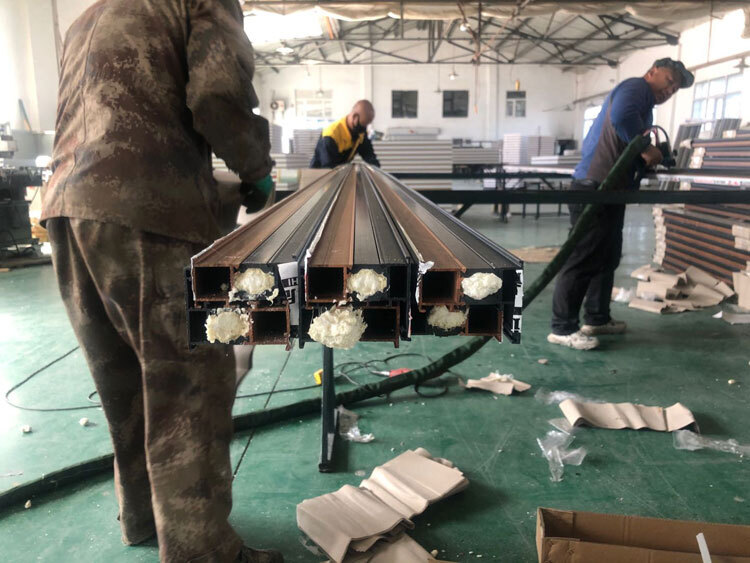Polyurethane Foam Filled in Broken Bridge Aluminum Windows and Doors
- 2021-11-21
- View 24
Case Introduction: Polyurethane Foam Filled in Broken Bridge Aluminum Windows and Doors.
In the realm of modern construction, energy efficiency and thermal insulation have become paramount considerations. One innovative solution that has gained significant traction is the use of polyurethane foam in broken bridge aluminum windows and doors. Below is a case introduction that highlights the benefits and applications of this technology.For example, models such as JNJX-Q2600D, JNJX-Ⅲ(E), JNJX-H5600(D),JX-H-P30S and T40D polyurethane foam machine.

JX-H-P30S

JX-H-P30S

JX-H-P30S

JX-H-T40D

JX-H-T40D

JX-H-T40D
Project Overview:
The project involved the installation of broken bridge aluminum windows and doors in a newly constructed residential complex. The goal was to enhance the thermal insulation properties of the building while maintaining aesthetic appeal and structural integrity.
Challenge:
The challenge was to find a material that could effectively fill the gaps in the aluminum profiles to provide superior insulation without compromising the strength and durability of the structure.
Solution:
Polyurethane foam was selected as the filling material due to its excellent thermal insulation properties, lightweight nature, and ability to adhere to various surfaces. The foam was injected into the hollow cavities of the broken bridge aluminum profiles, creating a seamless and airtight seal.
Key Steps:
1. Profile Preparation: The aluminum profiles were prepared by cleaning and ensuring that all surfaces were free from dust and debris to ensure proper adhesion of the foam.
2. Foam Injection: A specialized polyurethane foam injection system was used to fill the cavities of the aluminum profiles. The foam expanded to fill the space completely and bond with the aluminum.
3. Curing: The foam was allowed to cure and harden, forming a rigid and durable insulating layer within the aluminum profile.
4. Finishing: Once cured, the foam was trimmed and finished to ensure a smooth surface, ready for the installation of glass and hardware.
Benefits:
- Enhanced Insulation: The polyurethane foam significantly improved the thermal insulation of the windows and doors, reducing heat loss in winter and heat gain in summer.
- Structural Integrity: The foam filling added rigidity to the aluminum profiles, enhancing the overall structural integrity of the windows and doors.
- Energy Efficiency: The improved insulation properties led to reduced energy consumption for heating and cooling, contributing to lower utility bills and a smaller carbon footprint.
- Aesthetic Appeal: The seamless and clean finish of the foam-filled profiles maintained the aesthetic appeal of the aluminum windows and doors.
- Durability: Polyurethane foam is known for its durability and resistance to wear and tear, ensuring that the insulation properties remain effective over time.
Conclusion:
The case study demonstrates the effectiveness of using polyurethane foam in broken bridge aluminum windows and doors. The technology not only enhances the energy efficiency of buildings but also provides structural benefits and aesthetic appeal, making it an ideal choice for modern construction projects.



